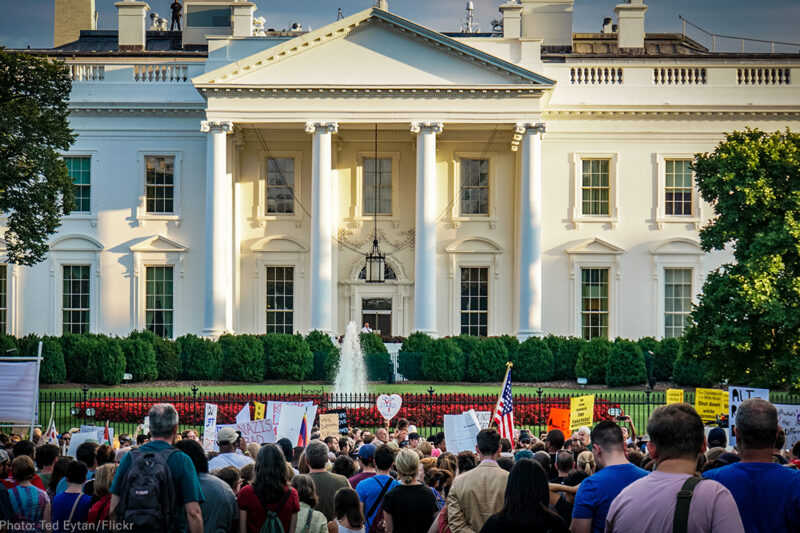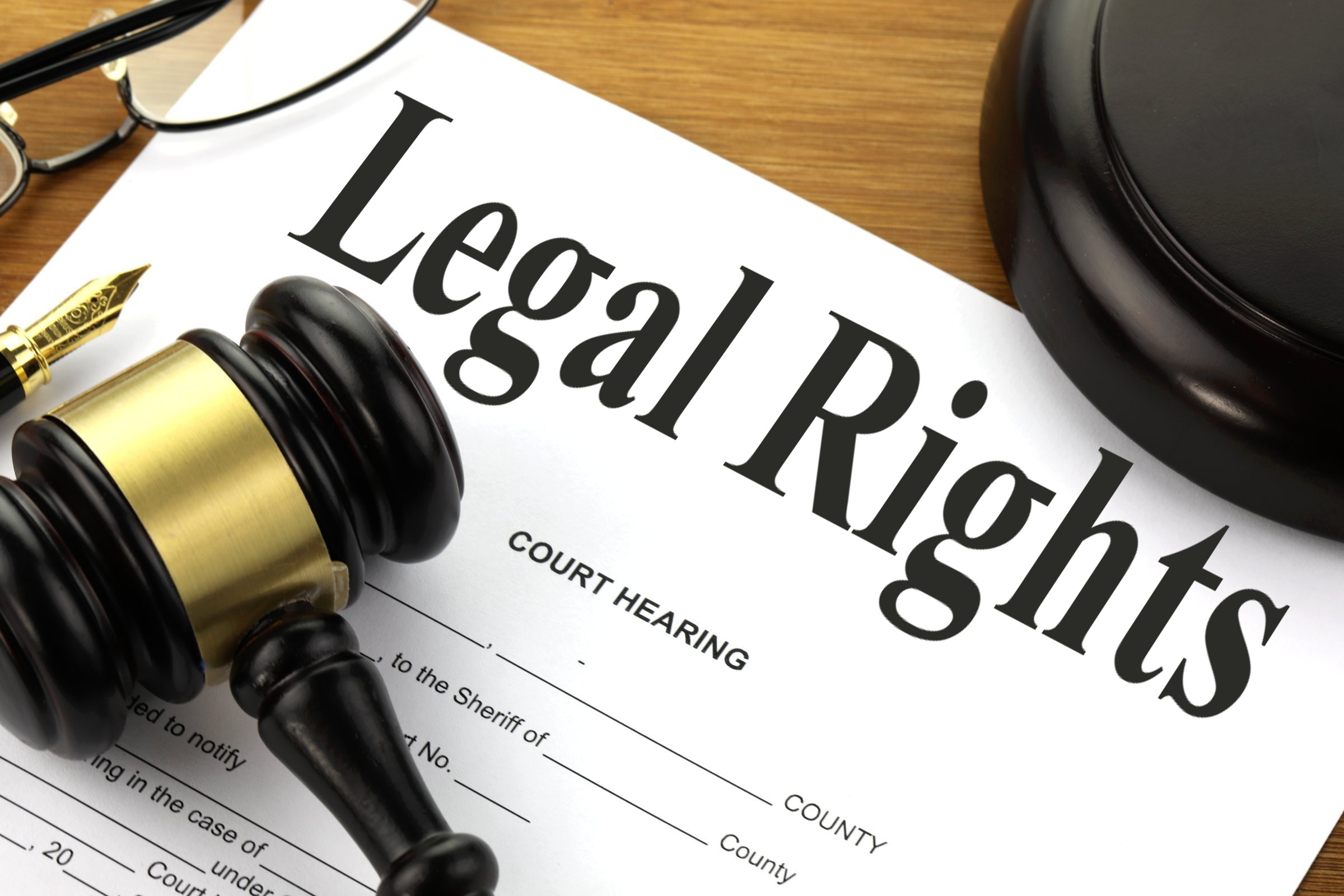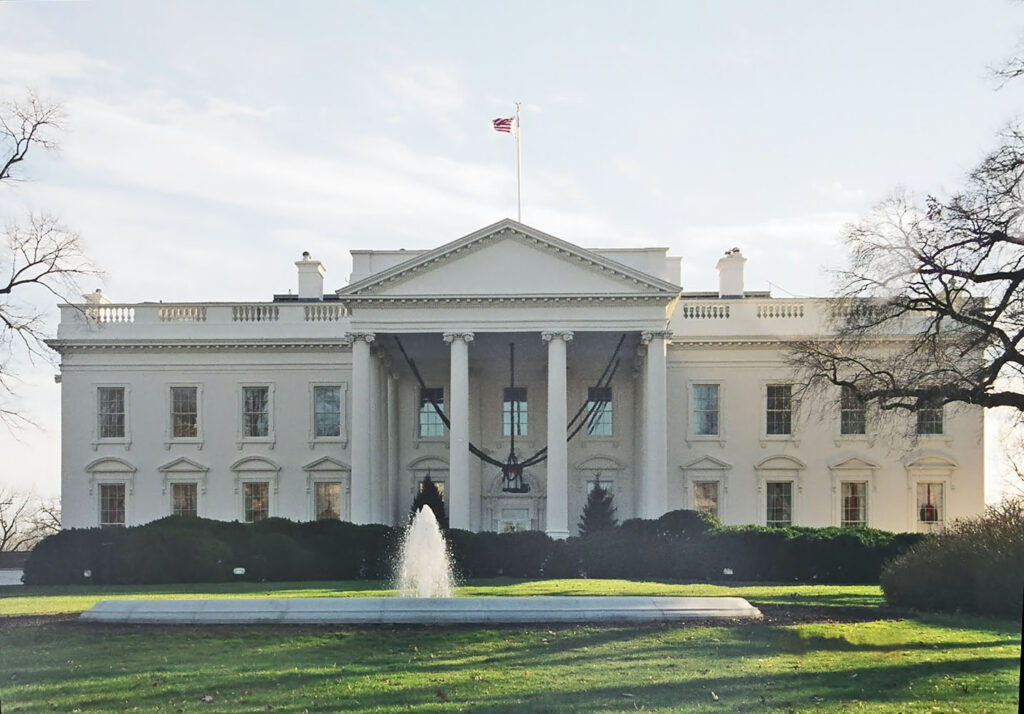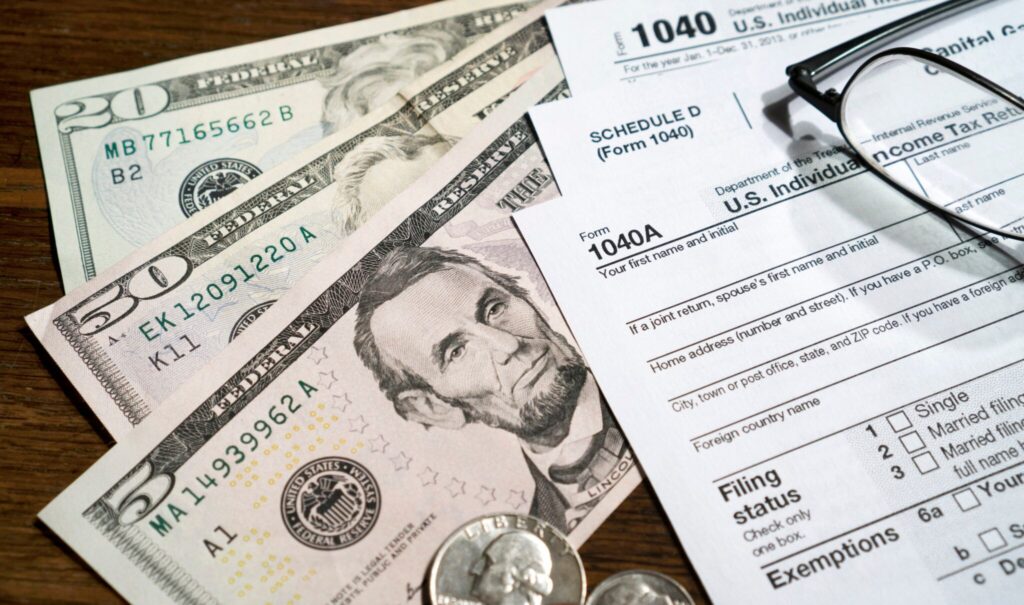
The year 2025 marks a period of profound transformation within the federal student loan ecosystem, with sweeping policy changes introduced by the “One Big Beautiful Bill Act” signed into law on July 4, 2025. These legislative and regulatory shifts are reshaping repayment plans, forgiveness options, and future borrowing limits, creating a complex and often uncertain environment for millions of federal student loan holders. Understanding these intricate developments is not merely advisable but essential for effective financial planning in the coming years.
Borrowers are confronting a dynamic landscape where previously established provisions are being reevaluated or phased out, while new programs and restrictions are simultaneously being implemented. From the contentious proposals surrounding the Public Service Loan Forgiveness (PSLF) program to the critical adjustments impacting the SAVE plan and older income-driven repayment (IDR) options, the trajectory of student loan management is undeniably shifting. This comprehensive overview aims to dissect these pivotal changes, providing clarity and actionable insights for borrowers navigating this evolving terrain.

1. **Trump Administration’s Proposed PSLF Restrictions**The Trump administration has moved to significantly limit student loan forgiveness under the Public Service Loan Forgiveness (PSLF) program, publishing new proposed regulations for public inspection on Friday, August 15, 2025. This action follows President Donald Trump’s executive order in March, which called upon the Department of Education to draft new regulations specifically designed to curtail relief under this popular program. These regulations are not yet in effect, but their publication represents a critical step toward their potential implementation, carrying major implications for millions of federal student loan borrowers engaged in public service.
central to these proposed rules is a provision that would allow the Department of Education to cut off nonprofit or government organizations if it determines, by a preponderance of evidence, that “a qualifying employer has engaged on or after July 1, 2026, in activities that have a substantial illegal purpose.” The proposed regulations offer a clear, though broad, definition of what constitutes a “substantial illegal purpose.” This includes activities such as providing healthcare services to transgender youth, facilitating the violation of federal immigration laws, violating state laws, or engaging in activity that facilitates illegal discrimination. The latest iteration of these regulations largely mirrors preliminary drafts, albeit with some minor adjustments, signaling a consistent approach from the administration.
In accompanying commentary, the Department of Education articulated its rationale for these stringent new rules. “The regulatory changes outlined in this rule are designed to preserve the integrity of the PSLF program by ensuring that only borrowers employed by organizations engaged in lawful public service remain eligible for forgiveness,” the department stated. It further emphasized that by “excluding employers that engage in activities with a substantial illegal purpose, the rule aims to better align PSLF eligibility with the program’s statutory intent—to reward public service.” The department’s position also includes ensuring that it does “not indirectly subsidize employers who are engaging in activities that have a substantial illegal purpose,” underscoring a policy shift to align PSLF eligibility with specific interpretations of lawful public service.
Read more about: Student Loan Relief Unpacked: Navigating Eligibility for Up to $20,000 in Federal Forgiveness, State Programs, and Upcoming Changes

2. **Impact of PSLF Restrictions on Borrowers and Employers**The Department of Education openly acknowledged that these proposed changes to PSLF eligibility could have substantial consequences for federal student loan borrowers. For individuals currently relying on PSLF for eventual loan forgiveness, the prospect of their employer being deemed ineligible under the revised criteria introduces considerable uncertainty. This could compel many borrowers to reevaluate their career paths or seek alternative employment if their current public service role no longer qualifies for the program, particularly if they wish to continue accruing forgiveness credit.
Under the proposed rules, if an employer is determined to have engaged in activities that breach federal or state law or established public policy, affected borrowers would cease to receive credit toward loan forgiveness for months worked after the effective date of the employer’s ineligibility. While this could significantly delay or even prevent forgiveness for a subset of borrowers, the department has outlined mechanisms designed to mitigate “unexpected harm.” These include provisions for advance notice of employer ineligibility, transparency surrounding departmental determinations, and pathways for employer recertification, theoretically allowing both employers and employees to adapt.
Crucially, the department has stated that these borrowers would retain the ability to pursue PSLF through eligible employment elsewhere. This clause aims to preserve the fundamental incentive structure of the program, which is to encourage individuals to enter and remain in public service. However, the practical challenge of securing new qualifying employment, especially for individuals deeply embedded in specific public service roles, could still present significant hurdles for those whose current employers are impacted by these restrictive new definitions.
Read more about: Student Loan Relief Unpacked: Navigating Eligibility for Up to $20,000 in Federal Forgiveness, State Programs, and Upcoming Changes

3. **Legal and Stakeholder Criticisms of Proposed PSLF Changes**Critics have voiced strong objections to the proposed PSLF regulations, arguing that they grant the Department of Education excessive power to disqualify entire organizations from the program based on policy disagreements rather than concrete legal violations. This raises concerns that the administration could effectively “weaponize” PSLF, using it as a tool to penalize entities whose missions or policy objectives diverge from its agenda. A notable point of contention is that, under the proposed framework, individual student loan borrowers would have no direct recourse or right to appeal a department’s determination regarding their employer’s eligibility, leaving them without a voice in a decision that profoundly impacts their financial future.
The Institute for College Access and Success (TICAS), a prominent student loan borrower advocacy organization, highlighted these risks in a July blog post. TICAS suggested that the Trump administration could leverage these regulations to cut off state and city governments that, in its view, are not sufficiently cooperating with federal immigration enforcement. Citing a Department of Homeland Security list of “sanctuary jurisdictions,” TICAS pointed out that numerous states, including large ones like California and New York, and major cities such as Boston, Denver, and Philadelphia, all led by Democrats, could be targeted. In such a scenario, “all employees of any of those jurisdictions could lose eligibility to get PSLF because the Department could determine that they are ‘aiding and abetting’ what the Department of Education (not the Department of Justice or Department of Homeland Security) feels is a violation of immigration laws,” TICAS argued. The critical distinction, TICAS emphasized, is that such a determination would be made by the Secretary of the Department of Education, rather than by a court of law.
Beyond government entities, TICAS also noted the potential for the administration to target dozens of major academic institutions, as well as nonprofit hospitals. The latter could be particularly vulnerable if they provide healthcare services to transgender youth, though the department did offer a clarification in its updated regulations, stating it would not target hospitals in states where such healthcare services are legal under state law. The department also clarified that it would not target employers based on employees’ constitutionally protected speech. However, a fundamental legal challenge remains: critics contend that Congress, when enacting PSLF, explicitly defined qualifying employers as 501(c)(3) nonprofit organizations or domestic government entities, without any exceptions. They assert that the Department of Education lacks the statutory authority to unilaterally alter this congressional definition, making the proposed new PSLF rules potentially illegal. “During three days of discussions with various stakeholders, the Department repeatedly dismissed pushback and questions, and it made clear that it intends to move forward on what is likely an illegal action,” TICAS concluded, indicating that many observers anticipate legal challenges once the regulations are finalized.

4. **The Immediate Future of PSLF: Public Comment and Effective Dates**It is crucial for borrowers to understand that the Trump administration’s efforts to restrict student loan forgiveness under PSLF are not yet in effect. The publication of the proposed regulations on Friday, August 15, 2025, represents a significant procedural step, but it does not equate to immediate implementation. As TICAS clarified in its July blog post, “Importantly, no changes will take effect right away.” The next critical phase in this regulatory process is a period of public engagement, which will directly inform the final shape of these rules.
With the early release of the proposed regulations, a mandatory 30-day period for public comment is scheduled to commence on Monday, August 18, 2025, coinciding with the official publication of the rules in the Federal Register. During this window, any member of the public, including affected borrowers, advocacy groups, and employers, is invited to submit feedback. The Department of Education explicitly stated, “We invite you to submit comments regarding these proposed regulations,” urging commenters to “clearly identify the specific section or sections of the proposed regulations that each of your comments addresses and arrange your comments in the same order as the proposed regulations.” It is important to note that “The Department will not accept comments submitted after the comment period closes,” underscoring the time-sensitive nature of this opportunity for public input.
Following the close of the comment period and the department’s review of all submissions, a final rule is expected to be released by November 1, 2025. Once finalized, these new student loan forgiveness restrictions for PSLF are projected to become effective by July 1, 2026. This timeline allows for a period of adjustment for both the department and affected entities, though it also sets the stage for anticipated legal challenges, as many observers predict that the contentious nature of these changes will inevitably lead to litigation once the rules are enshrined in law.

5. **SAVE Plan Interest Accrual After Injunction (August 1, 2025)**The landscape for borrowers enrolled in the SAVE plan has shifted dramatically, particularly regarding interest accrual, following federal court injunctions that blocked key parts of the program. As of August 1, 2025, interest officially resumed for nearly 8 million borrowers participating in the SAVE plan, even though the requirement for monthly payments remains paused through January 31, 2026. This development stems from the Department of Education’s announcement that it no longer possesses the legal authority to maintain 0% interest rates during the forbearance period, a direct consequence of the recent court rulings.
This change has significant implications for borrowers’ loan balances. Prior to August 2025, borrowers in the SAVE plan benefited from an interest subsidy where any unpaid interest that their monthly payment did not cover was wiped away, effectively keeping their balance flat even if their payment was low. This mechanism provided a crucial safeguard against balance growth. However, with the injunctions now in place, that subsidy is gone. As of August 1, 2025, interest is now accruing daily and will continue to add to the outstanding balance of SAVE loans.
While monthly payments are still paused until the end of January 2026—unless further court rulings accelerate this timeline—borrowers need to be aware that their loan balances will steadily grow in the interim. Some borrowers have already reported calculation errors on their accounts, and servicers are still displaying confusing or premature payment due dates. It is strongly advised that borrowers regularly check their servicer accounts to ensure that balances and due dates are correct, and to keep detailed screenshots or records in case disputes arise. This vigilance is paramount in managing the financial implications of this renewed interest accrual.

6. **Frozen Forgiveness Credits Under SAVE, PAYE, and ICR**Beyond the immediate impact of interest accrual, federal court injunctions have also significantly affected the progress of loan forgiveness for borrowers enrolled in several income-driven repayment (IDR) plans. Since mid-2024, and expanded further in 2025, these injunctions have effectively halted forgiveness under most IDR plans. This means that while borrowers’ progress toward the required number of qualifying payments is still being tracked, actual loan discharges remain temporarily paused until further notice, creating a state of prolonged uncertainty for those nearing their forgiveness milestones.
Specifically, forgiveness credits for the SAVE, PAYE, and Income-Contingent Repayment (ICR) plans have been frozen. This suspension affects millions of borrowers who have diligently made payments for years, expecting their remaining balances to be discharged after reaching the 20 or 25-year payment threshold. The Department of Education, while continuing to record payment progress, is unable to process final cancellations under these plans due to the ongoing legal challenges. This indefinite delay means that even borrowers who have technically completed their required payments will not see their loans discharged in the immediate future.
Notably, while Income-Based Repayment (IBR) forgiveness is legally authorized, the Department of Education has also temporarily suspended actual discharges for IBR plans due to a combination of legal and technical challenges. This means that across various IDR programs, despite accumulated payment credits, the ultimate act of loan cancellation is in limbo. For borrowers seeking to continue earning forgiveness credit, considering a switch to IBR might be an option if they qualify. However, it is important to acknowledge that the Department is currently grappling with a substantial backlog of over 1.5 million IDR applications, which could lead to significant processing delays for any plan changes.

7. **Key Changes for Existing IBR and ICR Borrowers (Transition Timeline)**Existing borrowers on older income-driven repayment (IDR) plans, specifically Income-Based Repayment (IBR) and the old Income-Contingent Repayment (ICR) plan under section 455(e), face substantial changes under the recently enacted One Big Beautiful Bill (OBBB) Act. A critical deadline looms for these individuals: borrowers on the old ICR plan or in related forbearance must select a new repayment plan by July 1, 2028. At this juncture, legacy IDR options—including SAVE, PAYE, and ICR—will no longer be available for new enrollments, effectively closing off these pathways to existing borrowers who have not transitioned.
The primary plan options available for these transitioning borrowers will be the new Repayment Assistance Plan (RAP) or the updated IBR plan, authorized under section 493C. While other less common plans authorized under section 455(d)(1) may persist, the decision for the vast majority of borrowers will center on choosing between the updated IBR and the new RAP. This necessitates a careful evaluation of individual financial circumstances and long-term repayment goals to select the most suitable option, given that these new plans may have different payment structures and forgiveness timelines.
In instances where a borrower fails to select a new plan by the July 1, 2028, deadline, the Department of Education will automatically assign them to either RAP, if eligible, or the updated IBR plan. Repayment under the newly assigned or chosen plan will officially commence on July 1, 2028. This automatic assignment mechanism aims to prevent borrowers from falling out of an IDR plan, but it underscores the importance of proactive engagement from borrowers to ensure they are placed in a plan that best meets their needs rather than passively accepting a default. To maintain control over their repayment strategy, borrowers must stay informed about these timelines and take action before the specified deadlines. They should also continue to monitor their servicer accounts for any discrepancies and maintain meticulous records of all communications and account statuses.

8. **Repayment Landscape for New Loans (Starting July 1, 2026)**Beginning July 1, 2026, the federal student loan repayment landscape will undergo a profound transformation for new borrowers. The “One Big Beautiful Bill Act” significantly narrows available options for those taking out loans on or after this pivotal date. This shift aims to streamline the system, introducing a less flexible environment that demands careful consideration from future students and their families.
Under these revised regulations, new federal loans will primarily offer two pathways: the Standard Repayment Plan and the new Repayment Assistance Plan (RAP). The Standard Plan features fixed terms, typically 10, 15, 20, or 25 years, with duration based on loan balance. This structure provides predictability but may offer less flexibility during periods of financial hardship compared to older income-driven options.
The new Repayment Assistance Plan (RAP) represents the sole income-driven alternative for new borrowers. Designed to adjust payments based on income, it offers a safety net, albeit with potentially longer repayment timelines extending up to 30 years for forgiveness. The curtailment of other legacy income-driven repayment options, such as SAVE, PAYE, and the old ICR, marks a significant departure from previous choices.
If a new borrower fails to actively select a plan, their loans will automatically be placed into the Standard Repayment Plan. This automatic enrollment means borrowers unaware of the options could find themselves in a repayment structure suboptimal for their financial situation, particularly if they anticipate lower post-graduation earnings that would benefit from an income-driven approach.
These new rules also extend to Direct Consolidation Loans made after July 1, 2026. Such consolidated loans will similarly be restricted to repayment under either the Standard Plan or RAP. This consistency across loan types underscores the legislation’s intent to standardize repayment options for all federal student debt originating or consolidated after the specified effective date.

9. **Revised Borrowing Limits for Graduate and Professional Students**The “One Big Beautiful Bill Act” fundamentally alters the availability and limits of federal student loans for graduate and professional students. A significant change effective July 1, 2026, is the complete discontinuation of the Graduate PLUS loan program for new borrowers. This eliminates a crucial funding source that historically allowed graduate students to cover educational expenses up to their school’s cost of attendance, often without stringent credit checks.
With the elimination of Graduate PLUS, graduate students will now face explicit annual and lifetime borrowing limits across all federal loan programs. Specifically, new graduate students will encounter an an nual cap of $20,500 on their federal student loans. This represents a substantial restriction for many advanced degree programs, which frequently entail higher tuition and living expenses.
Beyond the annual limit, a new lifetime federal borrowing ceiling of $257,500 will be imposed for graduate and professional loans. This comprehensive cap excludes Parent PLUS loans, indicating a clear boundary on the total federal debt individuals can accumulate for their own advanced education. Such a limit could necessitate a reevaluation of program choices or reliance on alternative funding sources for students pursuing multi-year or expensive degrees.
Professional students, such as those in law or medical programs, will be subject to higher annual caps, allowing them to borrow up to $50,000 annually. However, even with this elevated limit, they remain bound by the overarching federal cap for graduate and professional loans. This structured approach manages overall federal student loan exposure while acknowledging the distinct financial requirements of specialized professional training.
The overarching implication of these revised borrowing limits is a heightened emphasis on financial planning and potentially a greater need for supplementary funding. Graduate and professional students must meticulously assess their educational costs and potential federal loan eligibility under these new caps. This could drive more students to consider institutional aid, scholarships, or private lending.

10. **Crucial Implications for Parent PLUS Loan Borrowers**Parent PLUS loan borrowers face significant changes under the “One Big Beautiful Bill Act,” beginning with loans first disbursed after July 1, 2026. For these new loans, Parent PLUS will be reclassified as an “excepted loan,” meaning they will be restricted exclusively to the Standard Repayment Plan. This effectively strips them of eligibility for any income-driven repayment (IDR) options, including the new Repayment Assistance Plan (RAP) or the updated IBR plan.
The “excepted loan” status also extends to Federal Direct Consolidation Loans if their proceeds were used to pay off an excepted PLUS loan. This critical provision means even through consolidation, Parent PLUS borrowers will largely lose access to income-driven safety nets. The inability to tie payments to income could pose substantial financial challenges for parents, particularly those experiencing fluctuating incomes or nearing retirement.
Furthermore, the long-standing “double consolidation” strategy, which previously allowed Parent PLUS borrowers to gain access to income-driven repayment plans, has been officially eliminated. This method involved consolidating loans twice to transform them into a Direct Consolidation Loan qualifying for certain IDR plans. Its removal closes a significant pathway for parents seeking more manageable payment structures based on their financial capacity.
For existing Parent PLUS borrowers already enrolled in an IDR plan, the transition timeline outlined in the OBBB Act remains critical. These borrowers must move to either the updated IBR plan or the new RAP by July 1, 2028. If no proactive choice is made, the Department of Education will automatically assign them to RAP (if eligible) or the updated IBR plan. This ensures some income-based relief but emphasizes the need for informed decision-making.
The timing for consolidation is now more critical than ever for Parent PLUS borrowers. To retain access to any form of income-driven repayment, any necessary consolidation must be completed before July 1, 2026. Given that the process can take several weeks, waiting until the last minute could inadvertently result in the loss of eligibility for more flexible repayment options, solidifying their placement solely within the Standard Repayment Plan.
Read more about: The Software Guru Behind a Viral Retirement Calculator Reveals Her ‘Boring’ Secrets to Financial Independence

11. **Introduction of the New Repayment Assistance Plan (RAP)**At the heart of the “One Big Beautiful Bill Act’s” long-term reforms is the introduction of the Repayment Assistance Plan (RAP), a new income-based repayment option authorized under section 455(q) of the Higher Education Act of 1965. This plan is poised to become one of the primary repayment choices for new federal student loans, alongside the Standard Repayment Plan, fundamentally reshaping the IDR landscape. Its phased rollout and specific eligibility criteria underscore a deliberate effort to redefine income-driven support.
RAP officially becomes available on July 1, 2026, for all federal loans not classified as “excepted loans” that are disbursed on or after this date. This means new borrowing post-mid-2026 will predominantly funnel into either the Standard Plan or RAP. The Secretary of Education is mandated to offer RAP for all eligible new loans, even for borrowers who also hold older federal debt, ensuring consistent application for future loan portfolios.
For borrowers transitioning from older income-contingent loans, such as those on the old ICR plan, the shift to RAP or other eligible income-based plans will commence on July 1, 2028. This two-year buffer allows for adjustment and decision-making for existing borrowers facing the sunsetting of legacy IDR options. Early opting into RAP or the updated IBR is permissible, offering an opportunity to proactively manage repayment strategy.
A critical limitation of RAP is its inaccessibility for “excepted loans.” This category notably includes Federal Direct PLUS Loans made on behalf of a dependent student (Parent PLUS loans) and Federal Direct Consolidation Loans whose proceeds paid off an excepted PLUS loan. Borrowers holding these excepted loans will be required to repay them separately and exclusively under the Standard Plan, highlighting a distinct tier of federal student debt with limited flexibility.
The overarching purpose of RAP is to provide a standardized, income-driven safety net for the majority of federal student loan borrowers. By consolidating various IDR options into a single, comprehensive plan, the Department of Education aims to simplify the repayment process while still offering protection against unaffordable monthly payments based on income fluctuations.

12. **Mechanics of RAP: Payment Calculation and Forgiveness**The operational mechanics of the Repayment Assistance Plan (RAP) introduce a structured, tiered approach to calculating monthly payments, directly linking a borrower’s Adjusted Gross Income (AGI) to their repayment obligation. Unlike some previous IDR plans, RAP employs a gradient system. For individuals with an AGI not exceeding $10,000, the minimum payment is set at $120. Beyond this threshold, payment percentages escalate progressively with higher income brackets.
For instance, AGIs between $10,001 and $20,000 will see payments set at 1% of AGI, while incomes between $20,001 and $30,000 will be charged 2% of AGI, and so forth, up to 10% for AGIs over $100,000. This tiered structure aims to distribute the repayment burden progressively, ensuring higher incomes contribute a larger proportion of earnings. This clear, predefined scale offers transparency in payment calculations.
A beneficial provision within RAP is the allowance for deductions based on dependents. Borrowers can reduce their AGI by $50 per dependent when calculating their monthly payment, lowering the overall obligation for families. Furthermore, RAP establishes a minimum payment of $10 per month. This means, unlike some previous IDR options, RAP ensures a baseline contribution regardless of income level.
The ultimate goal of RAP, like other income-driven plans, is loan forgiveness. Under RAP, any remaining principal and accrued interest will be canceled after a borrower has made 360 qualifying monthly payments, equating to 30 years of consistent repayment. This lengthy forgiveness timeline is a key characteristic, reflecting a shift toward extended repayment periods for comprehensive relief. It requires the most recent payment to be under RAP.
Payments counting toward this 30-year forgiveness threshold include on-time RAP payments, Standard Plan payments (if they met or exceeded RAP requirements), and Income-Contingent Repayment (ICR) plan payments prior to July 1, 2028 (if they met ICR requirements). Certain periods of deferment or forbearance, as defined by the Department of Education, also contribute to the 30-year count.

13. **RAP’s Borrower Assistance and Verification Protocols**A key feature designed to assist borrowers struggling with their loan balances under the Repayment Assistance Plan (RAP) is a provision addressing unpaid interest. If a borrower’s monthly RAP payment is insufficient to fully cover accrued interest, the unpaid interest will not be added to their principal balance. This mechanism is crucial for preventing negative amortization, a common concern in some older IDR plans, and helps maintain the integrity of the borrower’s loan balance.
Beyond interest relief, RAP also includes a provision for principal reduction, albeit with specific conditions. If a borrower’s RAP payment reduces the principal balance by less than $50 in a given month, the Department of Education will further reduce the balance. This reduction equals the lesser of $50 or the total amount paid that month, minus the portion applied to principal. This nuanced approach ensures some level of principal paydown for lower payments.
To ensure payments accurately reflect a borrower’s current financial standing, RAP incorporates robust verification and documentation protocols. Borrowers will need to submit documentation if their Adjusted Gross Income (AGI) is not readily available through federal tax data or if current income differs significantly from their most recently filed tax return. This flexibility allows for adjustments in payment obligations due to material changes in employment or income.
The Department of Education is also tasked with establishing streamlined procedures for annual income recertification. These procedures are expected to include options for automatic tax-based verification, which could significantly reduce the administrative burden on borrowers. By leveraging existing tax data, the system aims to make the annual recertification process more efficient and less prone to errors or missed deadlines.
For married borrowers, RAP payment calculation includes specific consideration for filing status. If filing separately, only their individual AGI is considered. Conversely, if filing jointly, their combined AGI will be used. This distinction is important for strategic tax planning and highlights how marital filing status can directly influence monthly loan obligations.

14. **Other Key Loan Forgiveness and Relief Provisions**Beyond the structural changes to repayment plans and borrowing limits, the “One Big Beautiful Bill Act” introduces several other crucial loan forgiveness and relief provisions. One significant change, effective after December 31, 2025, relates to the tax treatment of discharged student loan amounts. Forgiveness granted due to a borrower’s death or total and permanent disability will no longer be counted as gross income for federal tax purposes. This provision eliminates a potential financial burden for individuals and families facing difficult circumstances.
The new legislation also expands opportunities for loan rehabilitation, offering a lifeline to borrowers who have defaulted on their federal student loans. Effective July 1, 2027, borrowers will be permitted to rehabilitate their defaulted FFEL, Direct, and Perkins Loans up to two times. This doubles the previous limit, providing a greater chance to restore loans to good standing and regain eligibility for federal student aid benefits. For loans made on or after this date, the minimum required monthly payment during rehabilitation will be set at $10.
However, the implementation of new rules governing borrower defense to repayment and closed school discharges has been significantly delayed. The “One Big Beautiful Bill Act” stipulates these new rules will not take effect until July 1, 2035. Until this distant date, the Department of Education will revert to the regulations in place as of July 1, 2020, for loans made before July 1, 2035. This protracted delay creates a period of prolonged regulatory stasis in these critical borrower protection areas.
In a move aimed at enhancing the overall efficiency and effectiveness of federal student loan administration, Congress has appropriated a substantial sum to bolster servicing capabilities. A total of $1 billion has been allocated to the Department of Education to fund administrative costs specifically related to servicing federal student loans. This funding is designed to remain available until fully spent, indicating a long-term commitment to improving the borrower experience through better-resourced loan servicing operations.
These additional provisions, while varied in their scope and effective dates, collectively underscore the comprehensive nature of the “One Big Beautiful Bill Act.” From alleviating tax burdens for those facing severe hardship to offering extended pathways out of default and strengthening administrative support, these measures aim to refine the federal student aid framework, reflecting a multifaceted approach to student loan management.
The “One Big Beautiful Bill Act” represents a watershed moment in the history of federal student aid, fundamentally recalibrating how millions of Americans will manage their educational debt for decades to come. As we’ve explored, the path ahead is marked by both stringent new restrictions and crucial safety nets, demanding unprecedented vigilance and proactive planning from borrowers across all stages of their educational journey. Navigating this new era will require a deep understanding of these complex regulations, empowering individuals to make informed decisions that shape their financial futures in an evolving landscape.


